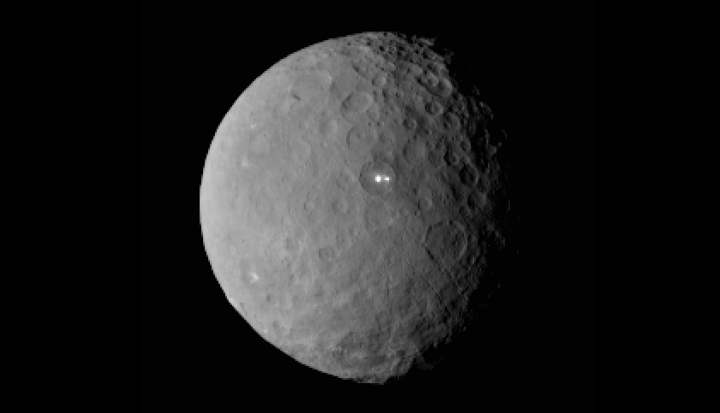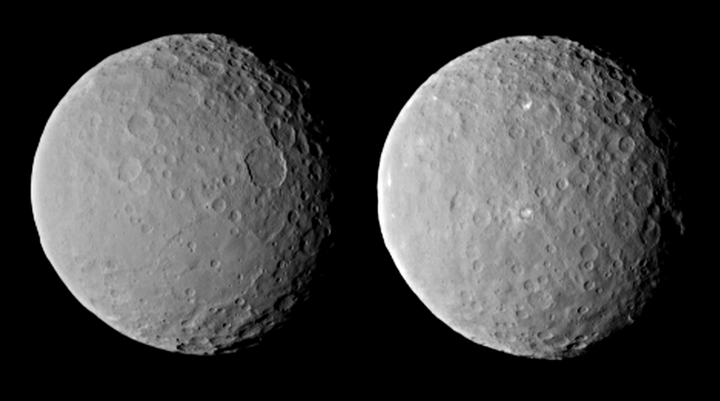TORONTO – As NASA’s Dawn spacecraft nears its target — the dwarf planet Ceres — the images are already giving scientists a lot to mull over.

A bright spot was spotted on the surface of Ceres by the spacecraft in January, puzzling scientists. Now new images have shown another, smaller bright spot on the surface.
READ MORE: Space telescope spies water plumes on dwarf planet Ceres
“Ceres’ bright spot can now be seen to have a companion of lesser brightness, but apparently in the same basin. This may be pointing to a volcano-like origin of the spots, but we will have to wait for better resolution before we can make such geologic interpretations,” said Chris Russell, principal investigator for the Dawn mission, based at the University of California, Los Angeles.
Ceres is the biggest object in the asteroid belt, a region of space between the orbits of Mars and Jupiter. It makes up about 25 per cent of the region.
“The brightest spot continues to be too small to resolve with our camera, but despite its size it is brighter than anything else on Ceres. This is truly unexpected and still a mystery to us,” said Andreas Nathues, lead investigator for the framing camera team at the Max Planck Institute for Solar System Research, Gottingen, Germany.

Dawn has already visited one object in the asteroid belt, Vesta. The spacecraft will enter orbit around Ceres on March 6.
In July, New Horizons will visit another dwarf planet, Pluto, once considered the ninth planet in our solar system.



Comments